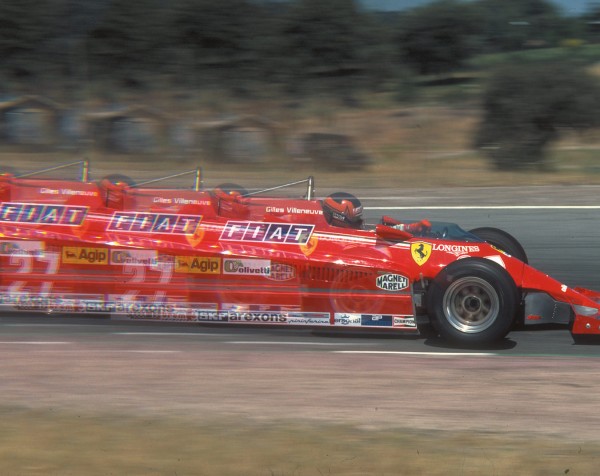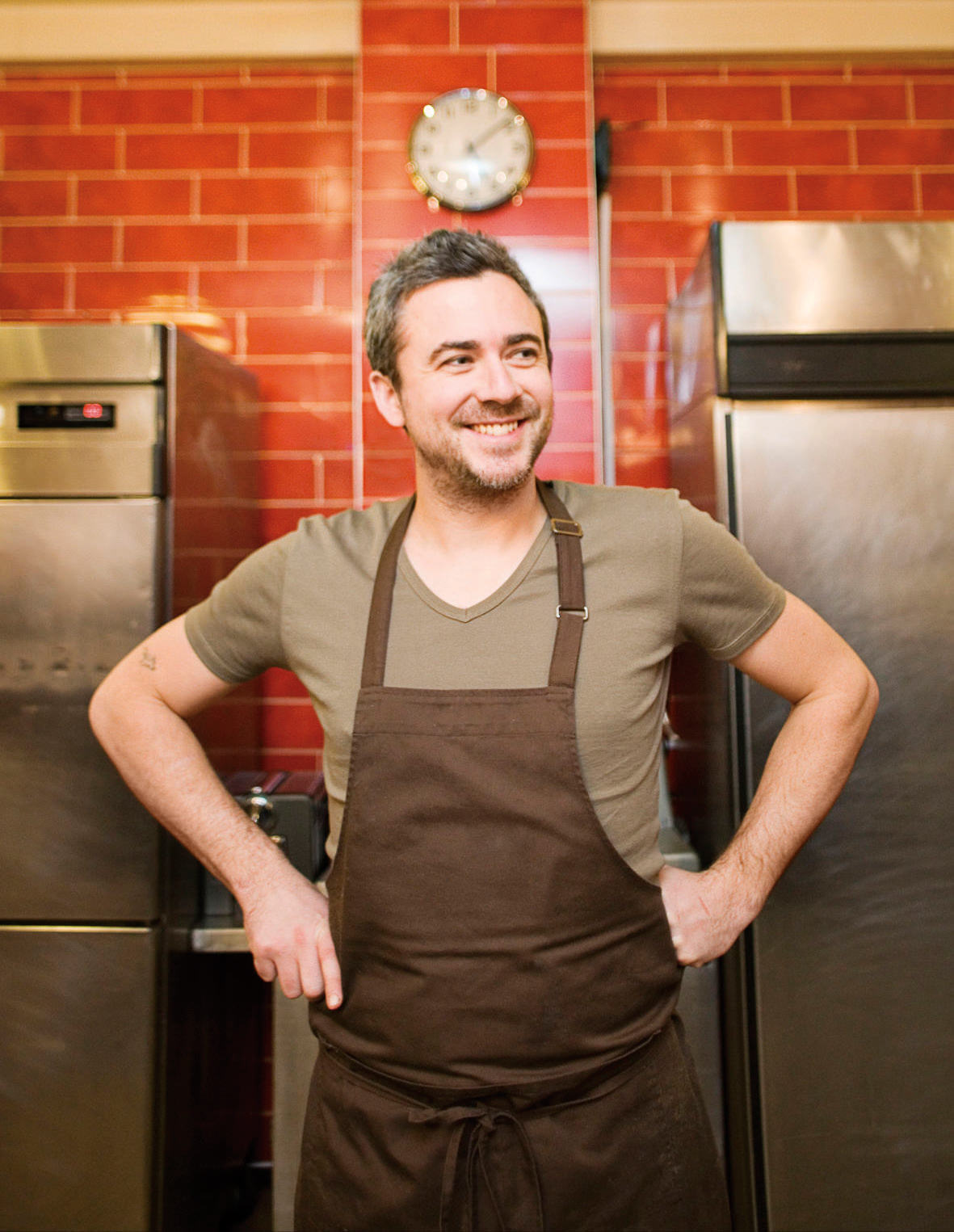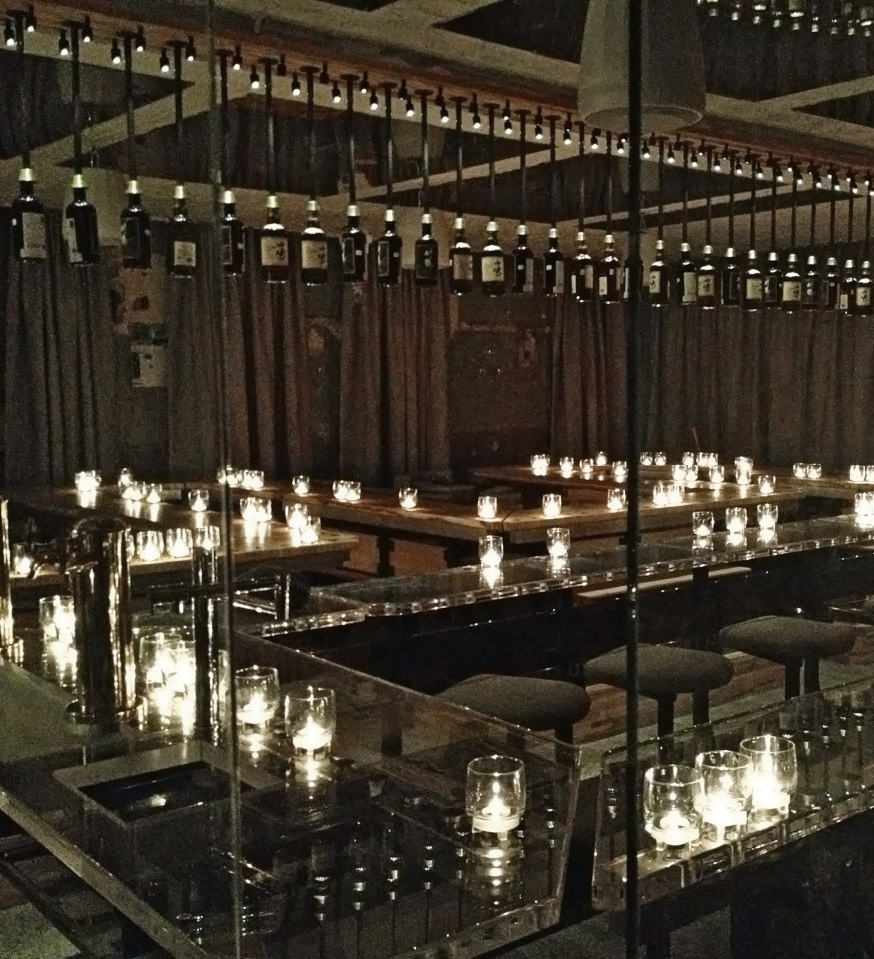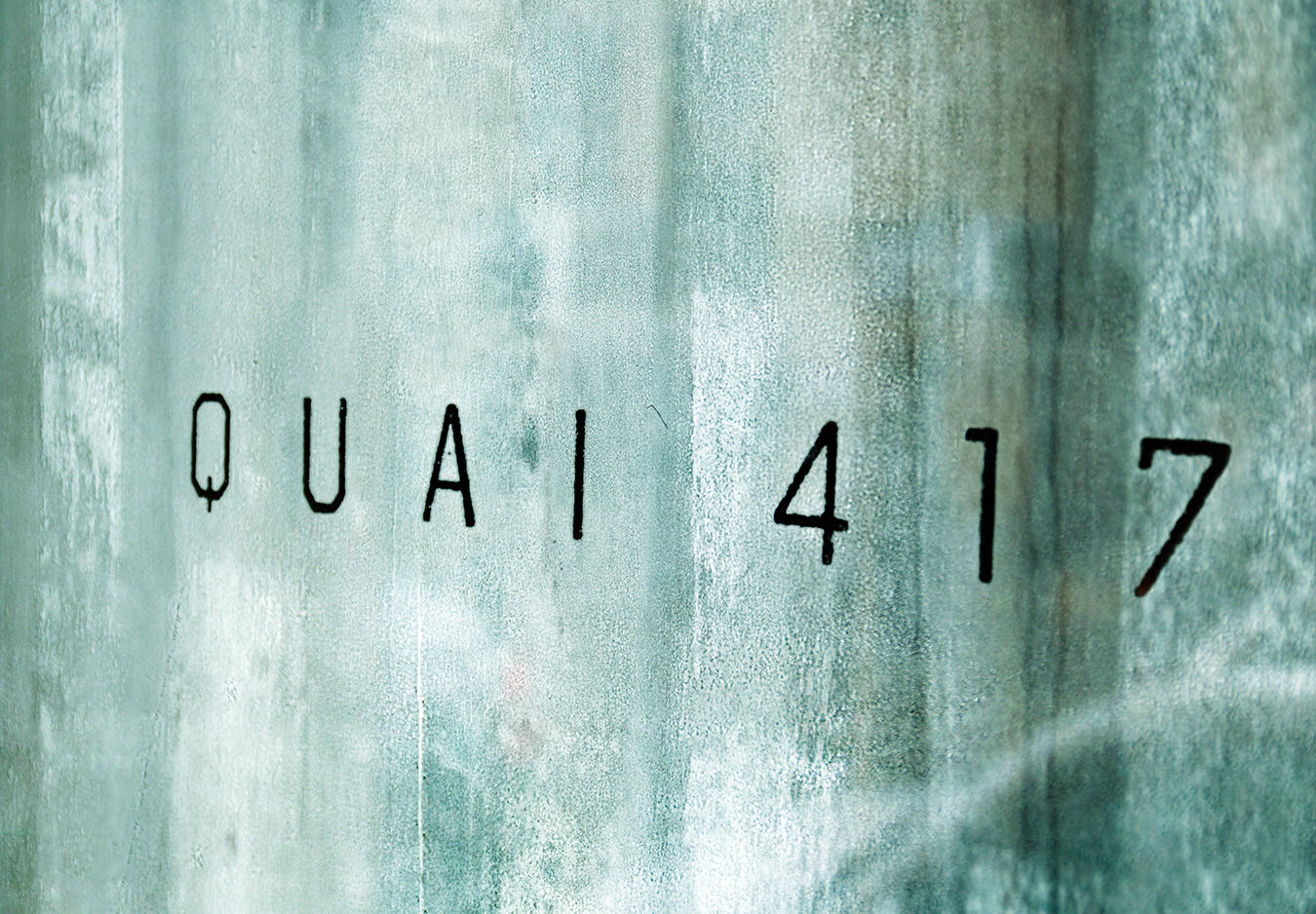Gilles Villeneuve
Faster, Papa, Faster.
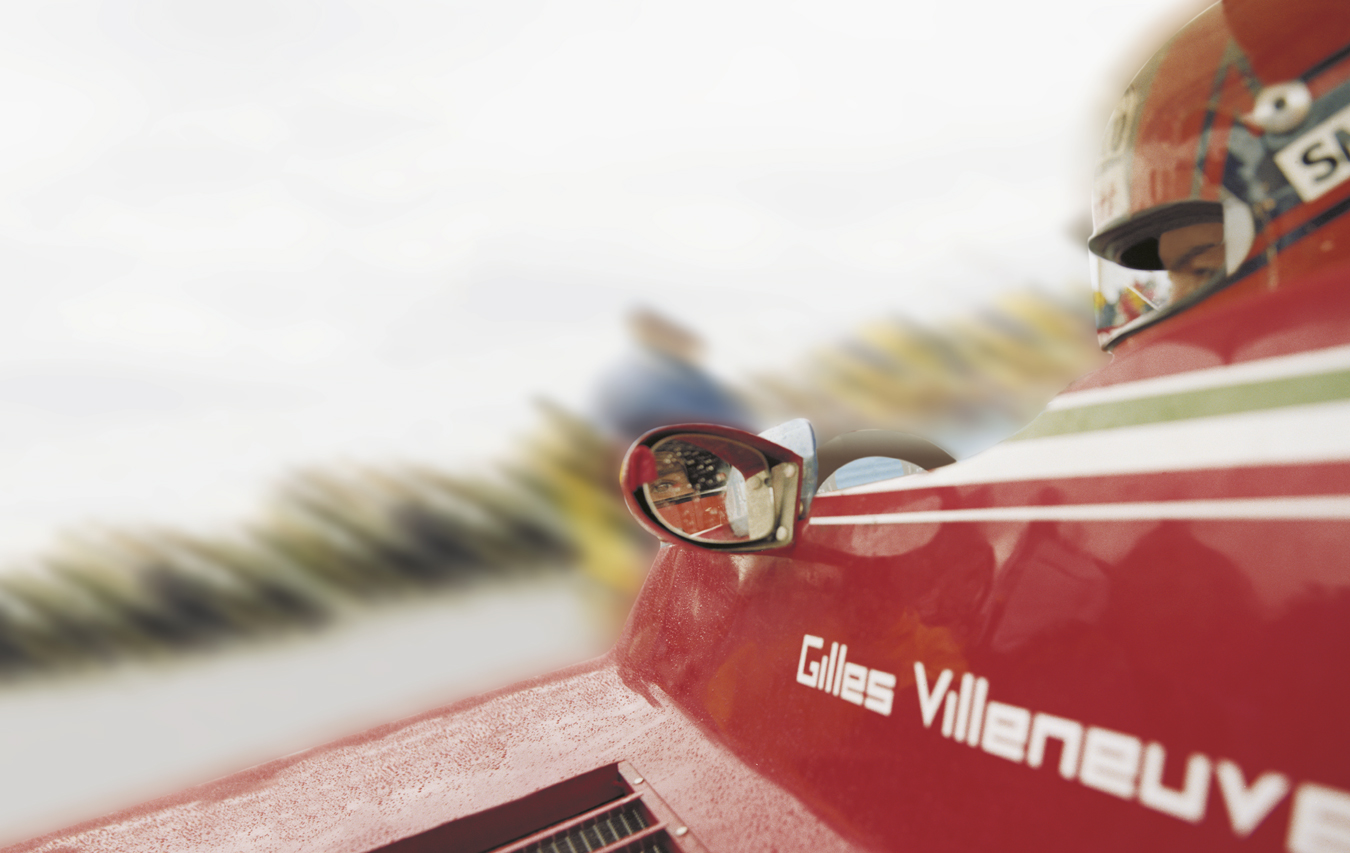
April 2, 1978. In just his seventh Grand Prix start, Gilles Villeneuve lined up next to his vastly more experienced team leader, Carlos Reutemann, on the coveted front row of the United States Grand Prix grid. Before the end of the first lap, Villeneuve led his first Grand Prix in splendid style. Then, as things tend to do in Grand Prix racing, all quickly changed for the worse.
Villeneuve came upon two cars fighting it out for eleventh place, a full lap behind. Not one to waste time disposing of cars he was lapping, Villeneuve dove to the inside. His blood-red Ferrari glanced off the inside curb, and then the right front tire came in contact with the left rear of Regazzoni. The impact, at relatively slow speeds by Grand Prix standards, threw the Ferrari up into the air, over Regazzoni. The flying car spun like a frisbee, coming to rest in the tire barriers. Villeneuve stepped, uninjured, from the wreck.
This was the third such incident I had seen since I had first encountered the fiery young French-Canadian, who almost seemed to float when he walked, tending as he did to walk on the balls of his feet. The first had been in Turn Three, during a Formula Atlantic race at Mosport, in 1975. He suffered a broken left leg there, and there too it was contact between his front wheel and the rear wheel of another competitor that cut short his charge for the front. Then Japan: in the last race of the 1977 Formula One season, Villeneuve missed his braking point leading into one of the faster corners on the Fuji circuit. His left front tire brushed the right rear tire of Ronnie Peterson’s Tyrrell. The Tyrrell spun onto the grass, while Villeneuve’s Ferrari was launched crazily into the air and somersaulted over the protective Armco barrier. The crash resulted in the death of a course Marshall, and a photographer. There were serious injuries to several spectators who had moved into the restricted area. Villeneuve walked away from the destroyed Ferrari unharmed.
Canadians, to this point, were not a great presence in Grand Prix racing. Several times during the 1970s, Canadian drivers were presented the opportunity to contest the Canadian Grand Prix as “Rent-a-Racers”. Simply put, they put up the cash to get behind the wheel of a Formula One car. Much of this funding came from the sponsors of the race, to attract even more attention from the media.
Since 1961, the Canadian Grand Prix had been held as a sports car race. In 1967, Canada’s Centennial year, race organizers had successfully lobbied the FIA, the sport’s governing body, to hold a World Champion-ship Formula One race at Mosport, east of Toronto. This race, held on a very demanding track, had two Canadians on the starting grid. Eppie Wietzes and Al Pease, both of Toronto, had qualified, albeit some seven seconds off the pole winning time of legendary Lotus driver, Jim Clark.
1969 would see another Canadian throw his hat into the Grand Prix ring. George Eaton, of the Eaton department store chain, had secured himself a full-time ride with the BRM team. Eaton would be the number three driver on the British team. He began his tenure with BRM at the final two races of the 1969 season, failing to finish either of these events. Eaton would enter ten races with BRM in 1970. He failed to qualify twice and qualified no higher than ninth during the rest of his season. He failed to gain a single World Championship point. George Eaton would again suit up for BRM in 1971, but only at the Canadian Grand Prix, now being held back at Mosport. (The Canadian Grand Prix would be held there until 1977.)
Eppie Wietzes appeared again in a Formula One car in 1974, a beautifully decked-out Brabham, in Team Canada colours. After a serious face-lift to meet new Grand Prix standards, the race would be held at Mosport for 1976 and 1977. That year Gilles Villeneuve took over Niki Lauda’s Ferrari. It was his first appearance in a Canadian Grand Prix.
In 1976, at the Formula Atlantic race at Trois Rivières, Villeneuve so soundly trounced James Hunt, of the Formula One McLaren team, that Hunt brought Villeneuve to the attention of McLaren team manager, Teddy Meyer. (The Trois Rivières race annually added Formula One regulars to the starting grid to enhance the prestige of the Quebec event.) Hunt had been joined in Quebec by Alan Jones, Patrick Depallier, Jean-Pierre Jarrier and Vitorio Brambilla, all established Formula One stars. Villeneuve qualified on the pole and left all opposition in his dust.
Villeneuve signed a contract with McLaren for a total of five races, plus an option for a full-time ride with the Formula One team. He waited impatiently for another call from McLaren, which never came. The one that did come was from Ferrari. During his early Formula Atlantic days, Villeneuve had taken on the services of Gaston Parent as his personal manager. The friendship between the two men flourished, and the astute businessman from Montreal took little time in disposing of the difficult McLaren contract. Villeneuve became the owner of the most sought after seat in Formula One. He was a full-time Ferrari driver, at a fee of $50,000. Parent saw the benefit of owning the rights to advertising on Villeneuve’s driver’s suit. He retained the rights to the space for Villeneuve and proceeded to secure several lucrative sponsors, anxious to tie themselves into Formula One in any way. Villeneuve had come a long way from a kid from Quebec, with a mortgaged mobile home, a wife, and two small children.
The rest of the Villeneuve saga has taken many books to tell. Villeneuve went on to win his first Grand Prix at home, the first time it was held on the new Formula One track on Ile Notre Dame, located in the heart of Montreal. He performed in sixty-seven Formula One Grand Prix races, all but one in his beloved Ferrari. He won just six races over the four-year span, but he won over the hearts of all Grand Prix fans. His gentlemanly conduct off the track, though too direct for some, was traded for a swashbuckling style behind the wheel that no one had ever seen before and probably not since, in the Grand Prix world.
Villeneuve had many exciting Grand Prix drives and many that he should have won. Three time World Grand Prix Champion, Jackie Stewart: “Gilles had a habit, when in the lead, to push the car beyond it’s limits. He was a great ‘bleacher pleaser’, but it was credited to Fangio for saying ‘You must win a race at the slowest possible speed’. Gilles would often break the car, rather than nurse it to the finish and the win.” Jody Scheckter, Villeneuve’s teammate at Ferrari: “Gilles only wanted to prove he was the fastest. It wasn’t about winning the race, it was about setting the fastest lap.”
Villeneuve often did this, both in the race and in qualifying.
During the 1979 season, in Watkins Glen, Scheckter had ventured onto the track during Friday’s qualifying session. It had been raining terribly; water pooled at various parts of the track. Scheckter returned to the pits, quite pale, but satisfied there was not a human on the planet who could endure the conditions at anywhere near the times he had set. He was almost right, but on this day Villeneuve seemed far from human. When he returned to the pits, after slipping and powersliding his Ferrari around the dangerous circuit, it was Scheckter who told him he had beaten the time by an impossible eleven seconds! There were many incidents like this, part of Villeneuve’s entry into legend.
He was legendary off the track as well. After an advertising photoshoot, Villeneuve, accompanied by Parent and two unsuspecting journalists, was to drive back into the local town.
“Whatever you do, don’t let him drive,” said Parent. “I already gave him the keys,” replied one of the journalists. Parent got in the back seat, knowing what was about to happen. Villeneuve proceeded to give all three of his passengers the white-knuckler ride of their lives. “He just never knew when to slow down,” said Parent, with a wry smile on his face. “He just liked to go fast in anything.”
“Gilles only wanted to prove he was the fastest. It wasn’t about winning the race, it was about setting the fastest lap.”
My favourite personal experience was during a winter trip to Kitzbühel for the World Cup Downhill. Villeneuve was a great friend of the Crazy Canuck downhill team. On the return trip to Monaco, he saw an ice race for motorcycles being held on a small lake beside the road. On came the handbrake, a quick spin in the middle of the road, and back we went. Villeneuve had to see what was going on. After being recognized, he was offered one of the powerful motorcycles with large spike studs on the tires, for a little spin around the track. Within two laps, Villeneuve was at the track record and then under it.
In May of 1982, the Grand Prix circus made its annual stop in Belgium. This year Zolder was the location, rather than the legendary and daunting Spa. During the final moments of qualifying on Saturday, Villeneuve crested the rise after the first chicane following the pit exit. He encountered the much slower March-Ford of Jochen Mass. Villeneuve was on his last set of qualifying tires, his final chance to better his position on the starting grid. There would be no question of lifting off to make his pass. He eased his Ferrari to the right. At precisely the same moment, Mass also pulled to the right, to give Villeneuve the best line. The misunderstanding led to Villeneuve’s left front tire striking the right rear of the March, the fourth such accident in Villeneuve’s career. The Ferrari instantly became air-borne at over 200 kph. It somersaulted several times and landed nose-first in soft sand at the side of the track. Villeneuve was thrown from his beloved Ferrari, into the catch-fencing on the outside of the turn. His final moments were repeatedly shown to his fans and followers via world television. His death shocked the Grand Prix family to its core. Later that day, Eddie Cheever, driver of the Talbot-Matra Formula One car and close friend of Villeneuve, remarked. “I can only think, the last thing on his mind, as he flew through the air, was, ‘well, I really blew that lap!’”
For many, it was the day the air went irrevocably out of the balloon, the day the music of fast machines died. It surely did for me. To this day, I still enjoy racing, but I have never levelled my camera at another Formula One racing car.
It was well over a decade before another Canadian would enter and qualify a Grand Prix car, again a Villeneuve. This time, it was the son of the father. Jacques Villeneuve had begun his racing career in Europe, before heading to Japan to hone his skills. Upon his return to Canada, he was an accomplished and professional young man, with considerable talent and a very long shadow to walk in. Those that loved the father, loved the son: he could do no wrong. He would please his father’s Canadian fans and gather in his own legion of fans worldwide. Young Villeneuve would move to CART racing and win the title; he would also win the prestigious Indianapolis 500. He had nearly won it all, but there was still an important goal yet to be dealt with. The call from Formula One was not long in coming, but it came from the all-powerful Williams team, not from Ferrari. The driver’s tests were conducted under the ever-watchful eye of the media, for this was the son of the great one. An offer was made, accepted, and Jacques jumped the CART ship to be principal driver of the then most powerful team in Formula One. It took two years, but Jacques won many races and finally the title that had eluded his father. In 1997, Jacques Villeneuve was crowned the World Champion of Formula One.
Soon after his illustrious year, Villeneuve jumped ship from the Williams team to help form the new BAR Formula One team. The team has floundered and progress has been difficult. Young Villeneuve has become frustrated as an also-ran. His need to stand on the top of the podium has given him an eye to the future, an eye to a team that can put him back on top. It is often said it would be quite a dream to see another Ferrari bearing the number ‘27’, with a Villeneuve at the helm. Only time will tell.
Photos by Allan de la Plante.

